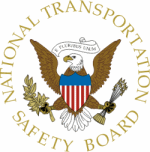Sat, Mar 06, 2010
Neither Pilot Saw The Other Aircraft Prior To The Accident
 The NTSB has issued its probable cause report in a mid-air
collision which occurred May 18th, 2009 off the coast of Long
Beach, CA. The board determined that both pilots failed to see and
avoid the other aircraft in order to prevent the collision.
The NTSB has issued its probable cause report in a mid-air
collision which occurred May 18th, 2009 off the coast of Long
Beach, CA. The board determined that both pilots failed to see and
avoid the other aircraft in order to prevent the collision.
According to the NTSB report:
"A Cessna 172N and a Cessna 310P collided in flight in a common
practice area for airwork. A witness was flying on a southerly
heading within the immediate area of the collision and noticed a
silhouette of an airplane, which appeared to be a Cessna 172 at his
10 to 11 o'clock position. The airplane appeared to be performing
maneuvers and making turns in a counter-clockwise direction,
followed by a turn in a clockwise direction.
The witness stated that he noticed another airplane entering the
area from the west, traveling at a high rate of speed on an
easterly heading. He added that he was unable to see what kind of
airplane it was and only saw a "black object" due to the sun being
almost on the horizon. The witness continued to watch both
airplanes and noted the fast moving airplane was continuing on an
easterly heading while the Cessna 172N was still performing
maneuvers on a southerly heading around the same altitude. The
witness observed both airplanes collide, disintegrate into small
pieces, and fall to the ocean below.
Review of recorded radar data revealed that the Cessna 310P was
maneuvering within a common practice area about 5 miles south of
the shoreline at various altitudes. The data depicted the Cessna
172N on a southerly course at an altitude of 3,000 feet msl while
conducting a series of shallow left and right turns prior to
performing a left 360-degree turn to a southerly heading. The
Cessna 310P was on an easterly heading at an altitude of 3,000 feet
msl for about 2 minutes prior to the collision. The radar data
depicted the two airplanes converging nearly perpendicular to one
another about five miles south of the shoreline. During examination
of the recovered wreckage, transfer marks were identified
consistent with the radar-derived collision angle. Both airplanes
were operating under visual conditions when they collided."
The NTSB determined that the probable cause of this accident was
"(t)he failure of both pilots to see and avoid each other's
aircraft."
More News
He Attempted To Restart The Engine Three Times. On The Third Restart Attempt, He Noticed That Flames Were Coming Out From The Right Wing Near The Fuel Cap Analysis: The pilot repor>[...]
Make Sure You NEVER Miss A New Story From Aero-News Network Do you ever feel like you never see posts from a certain person or page on Facebook or Instagram? Here’s how you c>[...]
From 2009 (YouTube Edition): Leading Air Show Performers Give Their Best Advice for Newcomers On December 6th through December 9th, the Paris Las Vegas Hotel hosted over 1,500 air >[...]
Aero Linx: NASA ASRS ASRS captures confidential reports, analyzes the resulting aviation safety data, and disseminates vital information to the aviation community. The ASRS is an i>[...]
“For our inaugural Pylon Racing Seminar in Roswell, we were thrilled to certify 60 pilots across our six closed-course pylon race classes. Not only did this year’s PRS >[...]
 NTSB Final Report: Rutan Long-EZ
NTSB Final Report: Rutan Long-EZ ANN FAQ: Turn On Post Notifications
ANN FAQ: Turn On Post Notifications Classic Aero-TV: ICAS Perspectives - Advice for New Air Show Performers
Classic Aero-TV: ICAS Perspectives - Advice for New Air Show Performers ANN's Daily Aero-Linx (06.28.25)
ANN's Daily Aero-Linx (06.28.25) Aero-News: Quote of the Day (06.28.25)
Aero-News: Quote of the Day (06.28.25)



